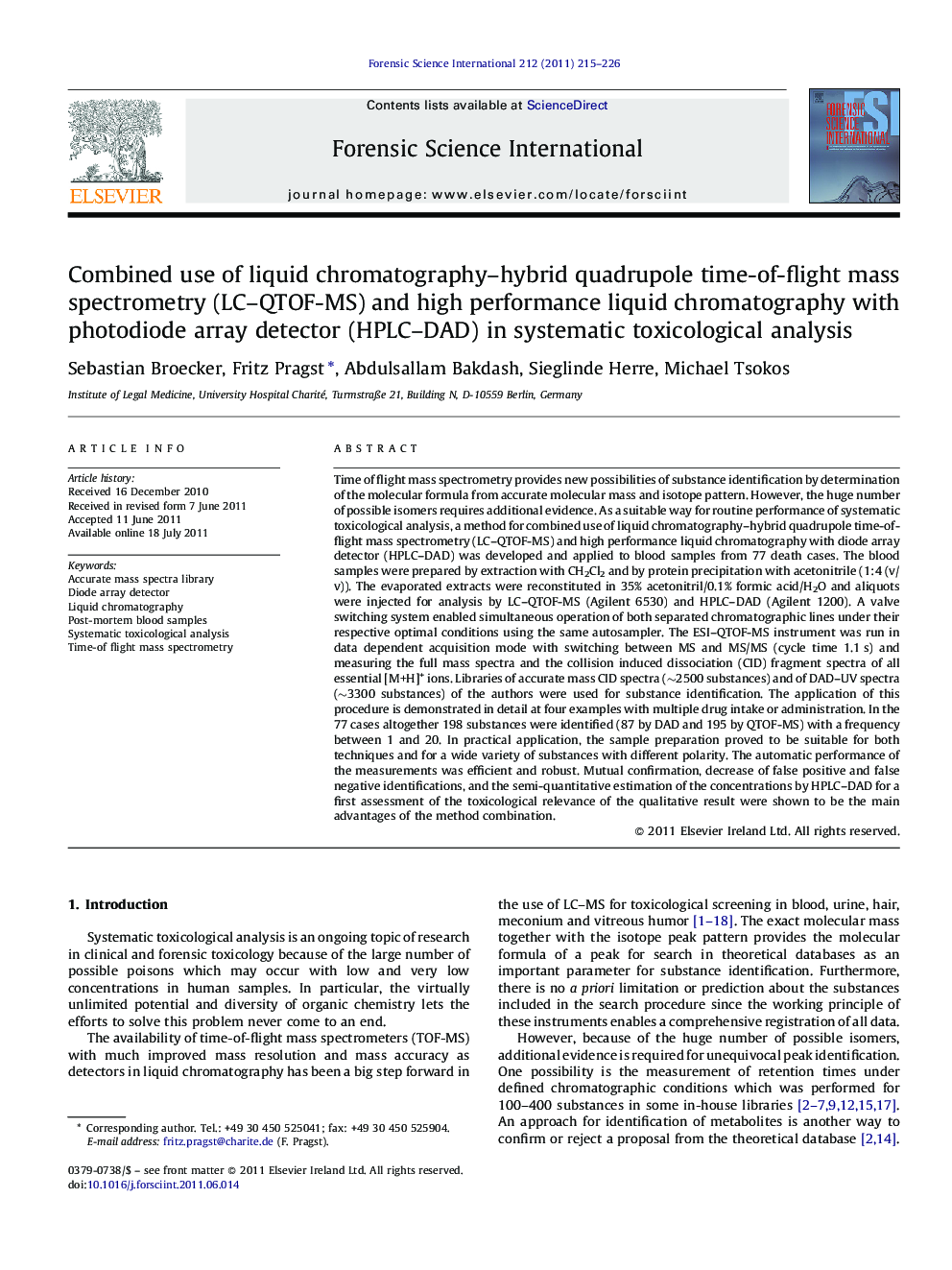| کد مقاله | کد نشریه | سال انتشار | مقاله انگلیسی | نسخه تمام متن |
|---|---|---|---|---|
| 96212 | 160459 | 2011 | 12 صفحه PDF | دانلود رایگان |

Time of flight mass spectrometry provides new possibilities of substance identification by determination of the molecular formula from accurate molecular mass and isotope pattern. However, the huge number of possible isomers requires additional evidence. As a suitable way for routine performance of systematic toxicological analysis, a method for combined use of liquid chromatography–hybrid quadrupole time-of-flight mass spectrometry (LC–QTOF-MS) and high performance liquid chromatography with diode array detector (HPLC–DAD) was developed and applied to blood samples from 77 death cases. The blood samples were prepared by extraction with CH2Cl2 and by protein precipitation with acetonitrile (1:4 (v/v)). The evaporated extracts were reconstituted in 35% acetonitril/0.1% formic acid/H2O and aliquots were injected for analysis by LC–QTOF-MS (Agilent 6530) and HPLC–DAD (Agilent 1200). A valve switching system enabled simultaneous operation of both separated chromatographic lines under their respective optimal conditions using the same autosampler. The ESI–QTOF-MS instrument was run in data dependent acquisition mode with switching between MS and MS/MS (cycle time 1.1 s) and measuring the full mass spectra and the collision induced dissociation (CID) fragment spectra of all essential [M+H]+ ions. Libraries of accurate mass CID spectra (∼2500 substances) and of DAD–UV spectra (∼3300 substances) of the authors were used for substance identification. The application of this procedure is demonstrated in detail at four examples with multiple drug intake or administration. In the 77 cases altogether 198 substances were identified (87 by DAD and 195 by QTOF-MS) with a frequency between 1 and 20. In practical application, the sample preparation proved to be suitable for both techniques and for a wide variety of substances with different polarity. The automatic performance of the measurements was efficient and robust. Mutual confirmation, decrease of false positive and false negative identifications, and the semi-quantitative estimation of the concentrations by HPLC–DAD for a first assessment of the toxicological relevance of the qualitative result were shown to be the main advantages of the method combination.
Journal: Forensic Science International - Volume 212, Issues 1–3, 10 October 2011, Pages 215–226